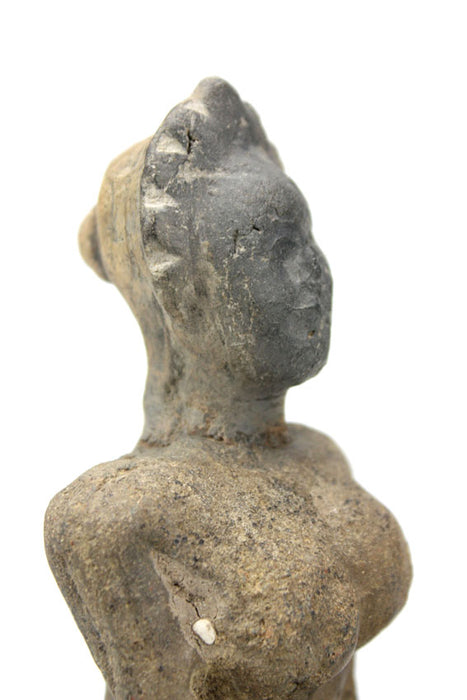
Propitiatory figurine Thailand circa 15th Century
Propitiatory figurine, Thailand
This terracotta female figurine would be traditionally placed in a Thai spirit house, shrine or temple as a propitiatory offering.
In modern times cheap plastic figurines are often used to fulfil this function.
Ceramic kilns at Sukhothai and Si Satchanalai fired thousands of similar figurines in the 14th to 15th centuries; The colors varied from white to celadon to brown, and black underpinning was occasionally used to emphasize details. What makes these individually modeled pieces so much more interesting than the mould-stamped modern versions is the love and observation that clearly has been put into them.
None are masterpieces, but the work of local craftsmen who draw on their own experience and the life around them to create spontaneous as well as sincere works. The mother-and-child figure, definitely mass-produced from the quantities that have been unearthed, was a particular favorite, and usually lovingly observed.
This piece has been repaired at the neck, but detached heads are also quite common. Such breakage was not accidental, but a feature of their use. When people took a figurine to the temple as a propitiatory offering to solve a problem such as bad luck or ill health, the function of the figurine was to remove the harm or had luck. To this end the figurine’s neck was broken and the remains buried. Such broken pieces are known as tukata sia kraban meaning literally ‘doll that has lost its head’.
Dimensions:
15 cm high x 7.5 cm wide x 8 cm deep
Date:
circa 15th century







